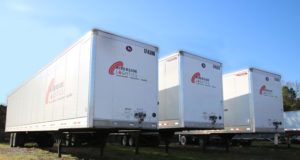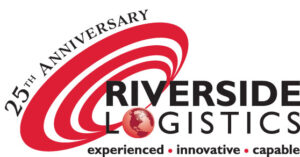According to most pundits on TV, and in the news journals, just about everywhere for that matter, all you hear is that there is a recession coming. OK, so there’s a recession coming, how bad it will be is anyone’s guess. The important question for people involved with the Supply Chain, is “what will it mean to my Logistics infrastructure?”
I’ll share some thoughts on the answer to that question.
Let’s set-the-table so to speak, and list conditions as they now stand in the current logistics environment.
First, warehouse space is very tight all over in general. If you consider just the Richmond, Virginia market, its occupancy rate approaches more than 98%. The percentages may vary by market but in general, space is extremely tight. Even new warehouse space that is coming on-line over the next 18 months is already spoken for. When talking to our clients they say their inventory levels are extremely high. For some of them that’s a good thing in that it allows them to respond to demand faster than their competitors. However, on the downside, it also ties up a lot of cash. Lead times for product are starting to shorten but are still longer than normal. All this adds up to higher levels of space utilization.
In addition to space constraints the costs inside the box have escalated. Labor costs soared due to the lack of available workers. Money talks, and warehousemen will migrate to the money. If your competition is paying 10 cents more an hour, you’re seriously at risk of losing workers. When you lose a worker, then you not only have to replace them with another one, but you also must train and then do your best to retain them as well. That takes both time and money.
As a 3PL demand for our services have never been higher. Warehouse space and labor is in short supply, but we focus on solutions for our clients and short term it will be challenging but our tools, experience and network tell us that solutions as time goes by are available. A deep understanding of your clients, a clear mission and open communication can lead to success. The more insight and lead time you give us, the more a 3PL can help you. Our consulting services may provide unique solutions that only a 3PL can offer.
Second, transportation supply. Trucking capacity was extremely tight and increasingly more expensive during the first half of 2022. That started to change during the second half of the year. Instead of carriers having too much business to handle and never providing capacity when we called them, they are now calling us trying to find loads. The tide has turned. Trucks are in greater supply. That’s a good sign. Service levels are improving, rates are stabilizing and, in some cases, starting to come down.
The big three factors in trucking costs are equipment, labor, and fuel. The first two, labor and equipment, are still at historical highs. Fuel prices have moderated. Since fuel is a major factor in freight costs, that is a good thing. However, new trailers have gone from ~30k each to ~55K each and lead times to get them are still over a year long. Labor is requiring more in wages. You don’t give back what you’ve already given. Please remember that there is still a shortage of truck drivers in the USA. That means the carriers must attract drivers using higher wages, benefits and better working conditions to keep and manage their workforces. We see that continuing in 2023.
The forces affecting Logistics costs and supply chain performance are counterbalancing each other. Space is tighter than normal, but transport is more readily available. A recession is looming. Meaning what? High costs for storage and handling, stable costs for transportation, moderate service level improvements.
It’s important to remember two things about this. One, the environment is fluid and can change dramatically if something unexpected happens as in a “Black Swan event”. Whatever I tell you today, is a best guess based on what I know …. today. Second, no matter what happens, if you plan and try to insulate yourself from supply chain and logistics shocks, you’ll be better off than if you don’t and do nothing.
What should you do to manage your logistics to plan for the next 12 months? Here are some suggestions:
- I would highly recommend that you find a 3PL that understands the markets for Transportation and Warehousing. Then take the time to develop a good working relationship with them (the 3PL). Use the 3PL’s market knowledge to your advantage. Remember that 3PL’s typically deal with a variety of clients, transport providers, and warehouses. This allows them to provide insight into where markets for transport and warehousing are directionally moving. They probably see these movements a lot sooner than you will and can provide early warning capabilities to you. 3PL’s, if they’re tied into their clients, can get a glimpse from a lot of different directions in different markets, as to what is influencing clients supply chains. The 3PL’s see how the clients handle these influencers, and basically can tell you what is working and what isn’t. This information is invaluable and if shared, can allow you to make better decisions regarding your own supply chain. Based on our experience sharing good intel about the supply chain with clients is beneficial to all parties.3PL
- Take advantage of the transportation marketplace by Bidding your business. If you do this utilizing a 3PL, it will afford you an opportunity to get the benefit of their market tools as well as their experience negotiating with carriers. This can provide another competitive advantage to your business as opposed to doing it yourself. If you bid your business and get client specific pricing that holds for a year, then you can make better long term pricing decisions.
- If you have storage needs, the market says space is at a premium. Make sure you fully understand your needs in terms of timeframe, space, handling, flow-thru etc. The better your information is the better or more realistic your cost of doing business will be. Don’t be afraid to lock in space for a longer term than usual. Unless you have a crystal ball that no one else has, it is in your best interest to lock in your costs for the long term so you can plan better. This will ensure your warehousing needs are met for a longer period of time. Moving from one space to another is expensive. Also, a 3PL can help here in a couple of ways. 3PL’s can expand with your space requirements. If they understand your type of business, they can help you navigate the supply chain as a partner and provide synergies that you can’t find and use on your own.
If I were to boil the answers down to a few, I would tell you to plan for and attack your logistics issues rather than let them attack you. Even in a dynamic environment such as now, planning will help you a lot in managing logistics. In addition, partner with a 3PL to help you provide resources and expertise to meet the demands of the logistics marketplace. If you do this, you’ll be happy that you did.







